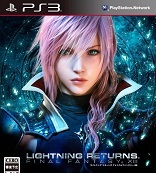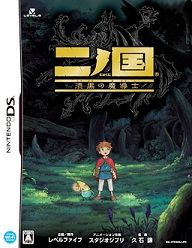Saga Frontier 2
PlayStation
Reviewed: 10/12/2005
 |
What’s most ironic about SaGa Frontier II‘s existence is that its immediate predecessor was supposed to be the last entry in its series. Whatever the reason for Squaresoft going back on its statement, SaGa indeed saw another Frontier on the PlayStation. While sharing noticeable similarities with its elder, there were also a number of differences.
First off, instead of having seven selectable heroes right from the beginning, the players are given two. Namely, they are Wil Knights and Gustave XIII. In order to progress the story, players select a scenario from those that are laid out on a map. Scenarios from each character’s story are available, and players can skip back and forth between stories as often as they like. They don’t even have to pay heed to time while doing this; it’s possible to see the future before the past. While it can be avoided by maintaining the dicipline to stick with one character until his story is finished, the lure of jumping over to that other character is always there. You can only hold out for so long, especially when the scenarios are right there in front of you. But a stronger reason you might want to keep switching back and forth is the fact that the two play so differently.
 |
| Some of the best visuals on PS1, in terms of artistic beauty |
The two main stories are like night and day in terms of how they play. It is apparent that they will be this way right from their respective beginnings. For example, the game itself starts by just flinging players into a scene of Gustave XIII being born. Players then witness a royal ceremony gone wrong and Gustave XIII’s father–the king at the time–kicking his wife and son out of the castle. And so go most all scenes in Gustave’s life: very story-driven. Wil Knights, on the other hand, is almost a character in a different game. His first scenario shows him walking out his Aunt and Uncle’s front door pretty much smoking a doobie and being like, “Hey, I’m leaving. See ya later.” And they’re like, “Okay, have a fun random adventure,” then players are free to quest. The two stay that different throughout pretty much the entire game. Wil Knights is who to consult for lots of battling and dungeon exploration that feels somewhat like SaGa Frontier, while the Gustave family likes to tell a detailed story that is somewhat entertaining, but a little boring over time. Add in the fact that his portion of the game has far less real gameplay and SaGa Frontier 2 has sadly divided its strengths. That’s not good. The reason previous games could get away with this was that all of the quests had a balance of story and gameplay, and one didn’t have to entirely depend on one character to carry the story ball and another to carry the combat ball.
SaGa Frontier allowed players to pick one squad from up to three different sub-teams within the party before battle. The sequel has something similar in allowing one to take the whole party into battle, or just send in one member for a duel. Also similar to previous SaGa games is the fact that certain special moves can combine with each other to form combos. A nice improvement from SaGa Frontier is a list of the combinations you unlock, so you won’t have to memorize or write them down like before. While a group battle works like it would in most any RPG, the duels are different. Instead of it being a one-on-one fight with the same system a party would use, each person in the duel is given multiple actions to take with everything they have, like different types of hits with weapons and different defense tactics with shields. As with groups using spells and skills, individuals in duels using the right selections of moves can lead to more powerful attacks. In all, the system works pretty well. It maintains its appeal through the course of Gustave’s tale, because said tale has so little combat. But in the Wil Knights section of things, where players will be doing almost nothing other than dungeon roaming and enemy-fighting, the player can get tired of seeing that screen.
 |
| Dialogue from the game’s story |
What’s bad about the system is that it’s so bloody hard. Keep in mind, this comment is coming from a reviewer who places the SaGa series as one of his favorites, and is fully familiar with the masochism that comes with being a SaGa fan. The statement remains. Wow, this game is hard. The casual gamer will be turned off from most of the SaGa games in general, and SaGa Frontier 2 might have been an excellent exeption, had it not been for how hard it can get. The fact that the in-game explanation of the system is so poor doesn’t help matters; one could potentially spend a third of the game feeling out the combat basics and controls.
SaGa Frontier 2 has some gorgeous graphics. All of the backgrounds were done in water color and have a look all their own. They are some of the best out there, and this aspect of the game earns a 10/10.
 |
| How’s he gonna sweet talk his way outta this one? |
The sound effects are just fine and what one would normally expect from a game colored in water color. The music fits the style as well, creating mood and not getting annoying very often. There’s not much that’s remarkable outside of the game, but it’s all fine while playing it.
This game ultimately ends up as a disappointment. It’s an okay game, but not among the best the PlayStation has to offer. For all that potential, SaGa Frontier 2 didn’t really run with the ideas it had. It could have been something great with some fixing to the story to balance it with the gameplay and maybe a more interesting script. The idea of having two characters focus on two different gameplay aspects sounds nice, but doesn’t play out as well. The idea was taken to too much of an extreme in SaGa Frontier 2.
-Heath Hindman
| Score Breakdown | ||
| Overall Below Average Out of 10 See our Review Criteria |
Gameplay | Below Average |
| Story | Average | |
| Graphics | Legendary | |
| Sound/Music | Very Good | |
| Replay Value | Horrible | |
| The Verdict: 4 | ||








